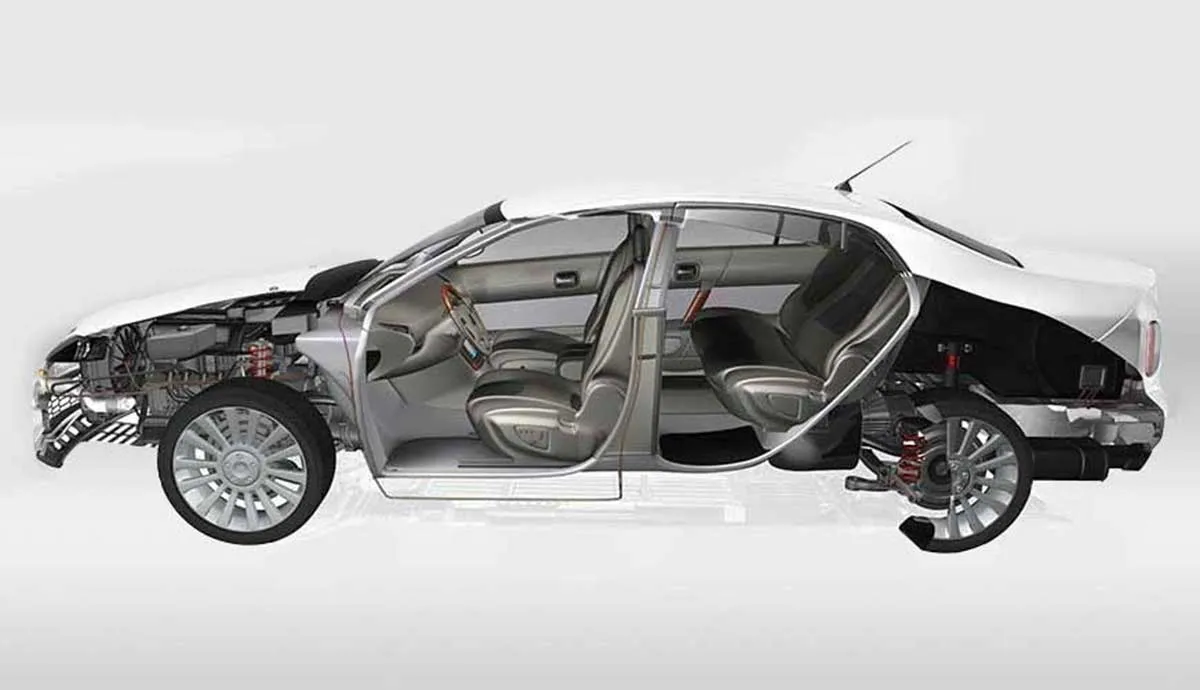Are you an automotive manufacturer or molder considering metal-to-plastic conversion to reduce part weight? Doing so may require you to challenge the status quo. This article will explore how to define and achieve lightweighting goals, identify the three automotive components that are well-suited to be replaced with advanced polymer solutions, and outline how Avient can help with the transition.
How to Lightweight Automotive Components
Defining and Achieving Lightweighting Goals
To start the transition from metal to plastic to streamline part weight, it’s important to define your objectives by asking the following questions:
- What performance factors drive your preference for aluminum or steel in part design? If heat dissipation is the primary driver, thermally conductive polymers could be an excellent alternative. For stiffness or strength requirements, consider leveraging long fiber thermoplastics technologies.
- Are current metal parts plagued with performance problems, such as corrosion? Plastics inherently resist corrosion, eliminating concerns about rust and other forms of oxidation that can compromise metal components.
- Do parts require expensive or time-consuming finishing processes? Injection-molded polymers can streamline assembly steps and eliminate secondary finishing processes, such as protective coatings and paint, enhancing production efficiency.
Engineered polymers and specialty composites are gaining popularity because they can achieve metal-like performance while providing design flexibility through injection molding. This combination creates a tremendous opportunity for OEMs and molders to create superior products that support sustainability goals, enable design aspirations, and – most importantly – deliver optimal performance.
Three Automotive Parts Primed for Metal-to-Plastic Conversion
It is equally important to note that not all metal parts are suitable for conversion to plastics. We’ll explore the following three automotive components that are well-suited for advanced polymer solutions:
1. Components requiring high strength, stiffness, impact resistance, or extreme temperature tolerance: Historically, concerns about plastics centered on their structural integrity and ability to withstand temperature fluctuations without melting, warping, or cracking. However, long-fiber thermoplastic (LFT) technology addresses these concerns, bridging the gap between short-fiber reinforced formulations and over-engineered materials. LFTs can maintain strength and stiffness across a broad temperature range and exhibit superior impact resistance and fatigue resistance compared to short fiber variants.
The advanced polymer technology behind LFT allows thermoplastics to retain their strength and stiffness from sub-freezing temperatures up to nearly 400° F (200° C). Specifically, LFTs demonstrate excellent impact performance even at high levels of stiffness, and these materials exhibit low creep compared to their short-fiber counterparts. They are also up to 100 times more fatigue-resistant than polymers reinforced with short fibers, offering a high degree of mechanical resistance to high loads. In terms of impact resistance, at equivalent levels of reinforcement and using the same matrix material, an LFT formulation is typically about 70 percent higher than that of a short-fiber formulation, and it also has greater stiffness.
LFTs still offer the ease of injection molding, like short-fiber polymers, but the fiber length and type (glass, carbon, etc.) are key factors in the strength, stiffness, and durability of plastics. In addition, long fibers form a “3D network” within a molded part; this network supports parts even when a polymer begins to soften (creep), meaning LFTs are an excellent replacement for metal components in portions of the vehicle subject to high stress from extreme temperatures or pressure.
2. Thermally conductive components: Traditionally, thermoplastics’ inherent insulating properties limited their use in heat dissipation applications. However, advancements in engineering thermoplastics now enable effective heat dissipation comparable to metals but at a fraction of the weight. As a result, thermally conductive plastics offer superior performance-to-weight ratios, making them an excellent choice for applications like automotive lighting and electronic systems.
With thermally conductive polymers, it is possible to reach thermal conductivities up to 20 W/m⋅K (in-plane). This is 50 to 100 times greater than standard thermoplastics and 1/5 that of cast aluminum. The typical densities of these specialty plastics vary from 1.65 to 1.75 g/cm3, which is 30 to 40 percent less than aluminum, bringing a high-performance alternative to the table at a fraction of the weight.
The outstanding performance-to-weight ratio combined with the ease of injection molding, fewer secondary processing steps, and complete design freedom can aid automotive engineers in many applications. External lighting is one example. Headlight and rear light fixtures produce significant heat, which can stress and fatigue components over time and even reduce a lamp’s lifespan. Thermally conductive plastics help dissipate the heat, adding life to the fixture while offering additional design and manufacturing benefits.
For many of the same reasons, thermally conductive plastics are also useful in the design of electronic components, fluid management systems, and many other heat-sensitive applications.
3. Electrically conductive components: Managing electrostatic discharge (ESD) or other static charges like electromagnetic Interference (EMI) is critical in modern vehicles. Electrically conductive and static dissipative materials can provide the necessary protection without the weight and design constraints of traditional metal components.
Engine control, power electronics, infotainment, active safety systems, and other electronic systems are standard for modern vehicles. To ensure these systems run correctly, EMI must be managed via shielding of an emitting source or of a sensitive component. Specialty polymers can deliver the same performance as traditional metal components and offer manufacturing ease for creating next-generation parts.
How Avient Can Help With Your Transition
Avient offers expertise in formulations, engineering services, and global technical and manufacturing support to address your unique challenges. Our diverse polymer portfolio and collaborative approach can help tailor solutions that optimize part performance and advance lightweighting goals. Contact our team to explore how we can maximize the performance of your automotive components.

